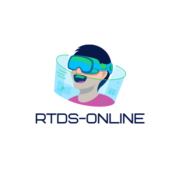There’s a certain magic in stories where characters, rather than events, steer the narrative. They captivate us, pulling us into their world, making us invest emotionally in their journeys. This article delves into the realm of character-driven stories, showcasing compelling examples that have left indelible imprints on the literary landscape.
Whether it’s the transformation of a shy hobbit into a courageous hero or the intricate evolution of complex relationships, character-driven stories offer an immersive experience. They invite readers to explore the depths of human emotions, motivations, and conflicts, creating a profound connection that extends beyond the pages of the book.
Character-Driven Story Examples
Defining Character-Driven Narratives
 Character-driven narratives, by definition, prioritize character development and evolution over plot progression. In these stories, individual characters, t heir attributes, emotions, and personal growth, form the central focus. Characters aren’t merely tools to propel the plot forward, instead, their personal journeys, inner struggles, and transformations form the essence of the narrative. Prime examples include Huckleberry Finn’s moral journey in Mark Twain’s “The Adventures of Huckleberry Finn”, or the intricate emotional progression of Elizabeth Bennet in Jane Austen’s “Pride and Prejudice”.
Character-driven narratives, by definition, prioritize character development and evolution over plot progression. In these stories, individual characters, t heir attributes, emotions, and personal growth, form the central focus. Characters aren’t merely tools to propel the plot forward, instead, their personal journeys, inner struggles, and transformations form the essence of the narrative. Prime examples include Huckleberry Finn’s moral journey in Mark Twain’s “The Adventures of Huckleberry Finn”, or the intricate emotional progression of Elizabeth Bennet in Jane Austen’s “Pride and Prejudice”.
The Importance of Character Development
Character development possesses significant importance in character-driven stories. This process involves the change and growth of a character throughout the narrative, revealing aspects of their personality, motivations, and beliefs. It’s this development that often drives readers’ empathy, breeds realism in the story, and keeps audiences engaged. For instance, Jay Gatsby’s infatuation with Daisy in F. Scott Fitzgerald’s “The Great Gatsby”, unveils not only his character but also pokes at the discontents of the American dream.
Iconic Character-Driven Story Examples
Literature Masterpieces
 Unraveling the threads of iconic character-driven stories, the world of literature offers stellar examples. Highlighting characters’ journeys, emotions, and personal growth over plot progression, these narratives draw readers into a profound connection with the individuals’ stories.
Unraveling the threads of iconic character-driven stories, the world of literature offers stellar examples. Highlighting characters’ journeys, emotions, and personal growth over plot progression, these narratives draw readers into a profound connection with the individuals’ stories.
- To Kill A Mockingbird by Harper Lee – This classic novel centers on Scout Finch’s growth and morality fostered by her father’s example. Throughout the story, character development takes precedence, with Scout beginning as an innocent child and emerging as a young woman aware of societal prejudices.
- The Catcher in the Rye by J.D. Salinger – Focused on the protagonist, Holden Caulfield’s adolescent struggles, this story perfectly underlines a character’s internal conflicts. The exploration of Holden’s character, his dislocation from society, and his emotional instability form the crux of the narrative, creating a powerful character-driven story.
- Pride and Prejudice by Jane Austen – Besides the romance, it’s Elizabeth Bennet’s personal growth and sensitivity that renders Austen’s work a timeless character-driven masterpiece.
Memorable Movies
Moving onto the cinematic universe, movies also present some exceptional character-driven narratives. Film characters’ developmental arcs, challenges, emotions, and transformations create a compelling storyline.
- The Godfather – Centering around Michael Corleone’s transition from an innocent, detached bystander to the ruthless patriarch of the Corleone family, the character’s transformative journey forms the heart of this saga.
- The Shawshank Redemption – Andy Dufresne’s resilience shines through in the narrative. His strength, determination, and friendship with Red, rather than the story of the prison itself, creates an immersive character-driven movie experience.
- Forrest Gump – The film revolves around Forrest’s life journey. Forrest’s wisdom, innocence, and resilience, more than the historical background, engage and move audiences, epitomizing a character-driven narrative.
Iconic character-driven story examples not only entertain but also present invaluable insights into individual characters’ emotions, personal growth, and the human psyche.
Elements of Character-Driven Stories
Focus on Character Growth
 Character growth, also known as character arc, showcases a transformation in a character’s beliefs, behaviors, or attitudes. In ‘The Catcher in the Rye,’ Holden Caulfield, starts as a disillusioned and rebellious teenager. As the narrative unfolds, his experiences and interactions induce personal growth. Another example is Andy Dufresne in ‘The Shawshank Redemption,’ his perseverance and hope change his circumstances dramatically.
Character growth, also known as character arc, showcases a transformation in a character’s beliefs, behaviors, or attitudes. In ‘The Catcher in the Rye,’ Holden Caulfield, starts as a disillusioned and rebellious teenager. As the narrative unfolds, his experiences and interactions induce personal growth. Another example is Andy Dufresne in ‘The Shawshank Redemption,’ his perseverance and hope change his circumstances dramatically.
Emotional Engagement
A character-driven story entices readers to form an emotional connection with the characters. ‘To Kill a Mockingbird,’ portrays Scout Finch, whose innocence and moral sense make readers empathize with her perspectives. Then there’s ‘The Godfather,’ where readers strangely sympathize with the tumultuous journey of Michael Corleone, despite being a mafia leader.
Work towards invoking readers’ empathy, engrossing them in the character’s world.

